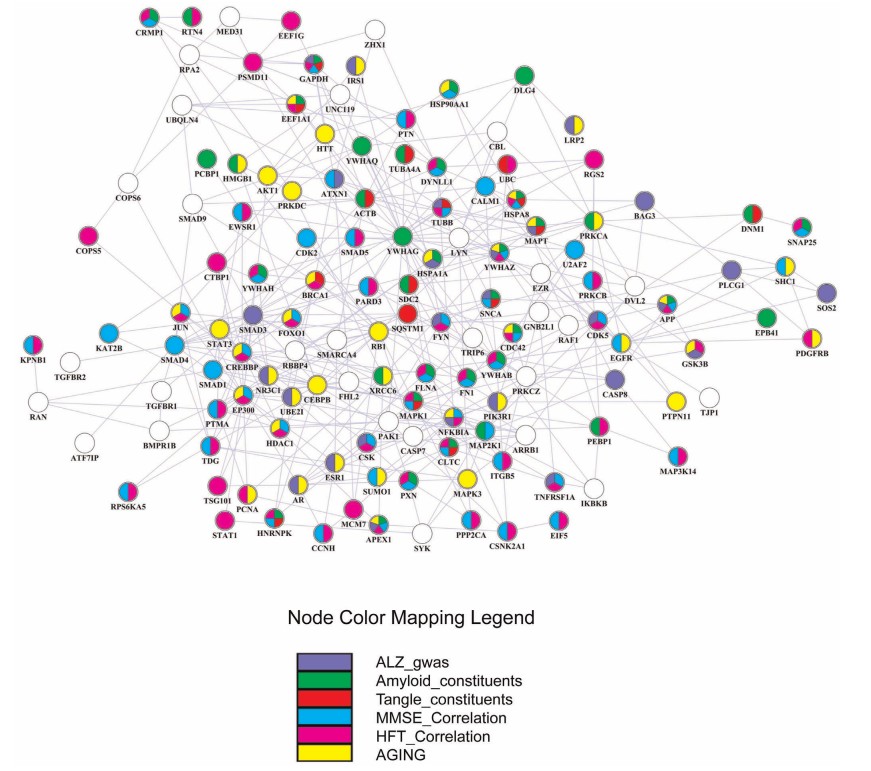Concerted Perturbation Observed in a Hub Network in Alzheimer’s Disease
Recently, a research team led by Prof. LEI Hongxing at Beijing Institute of Genomics (BIG), Chinese Academy of Sciences (CAS), conducted comprehensive network analyses on a microarray dataset concerning six brain regions of Alzheimer’s disease(AD), and further identified a hub network which may play a vital role in AD progression. This hub network reflects the adaptation strategy of neurons in AD specific micro-environment, and provides a hint for developing new drugs which has high efficiency and low toxicity.
AD is a progressive neurodegenerative disease, and is histopathologically characterized by the presence of extracellular amyloid-β (Aβ) amyloid plaques and intraneuronal neurofibrillary tangles (NFT) formed by tau. In the past decade, with the wide application of whole genome microarray technology to the study of AD mechanisms, several re-analyses of the publicly available microarray datasets have been conducted based on functional enrichment, pathway perturbation, and network perturbation. However, identifying the most critical dys-regulated genes has been challenging.
Using a recent microarray dataset on six brain regions, Prof. LEI and his research team derived the significantly perturbed subnetwork in each brain region. These perturbed subnetworks were found to be significantly overlapped with each other. Based on the perturbed subnetworks, the researchers further identified a connected hub network consisting of 136 hub genes. The biological relevance of this hub network has been supported by multiple lines of evidence. Firstly, comparison between AD and several related diseases demonstrated that the hub network was robustly and specifically perturbed in AD. In the meanwhile, strong correlation between the expression level of these hub genes and indicators of AD severity (MMSE and NFT scores) suggested that this hub network can partially reflect AD progression. In addition, the researchers also found that many of the genes in the hub network were linked to aging or genetic risk of AD, and were components of plaques or tangles based on previous proteomics studies.
Prof. LEI indicated that “This hub network reflected the adaptation of neurons to the AD-specific microenvironment through a variety of adjustments, including reduction of neuronal and synaptic activities and alteration of survival signaling. Therefore, it is potentially useful for the development of biomarkers and network medicine for AD.”

Graphical representation of the hub network consisting of 136 hub genes identified in the six brain regions. (Image by LEI's group)
Paper link: http://www.plosone.org/article/info%3Adoi%2F10.1371%2Fjournal.pone.0040498
Contact: Prof. LEI Hongxing